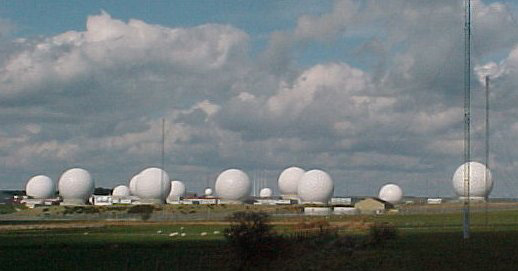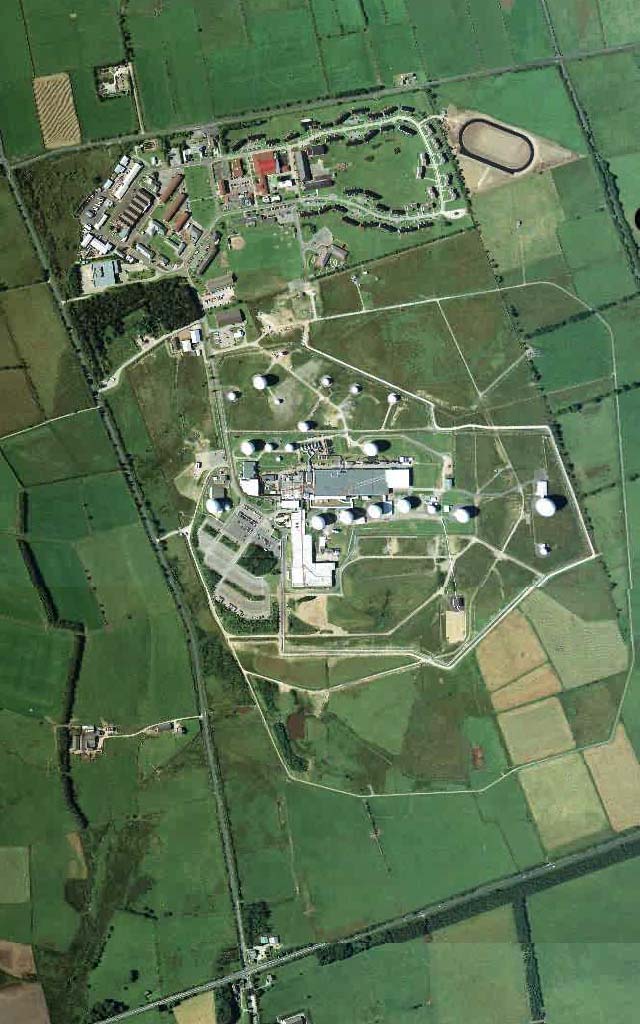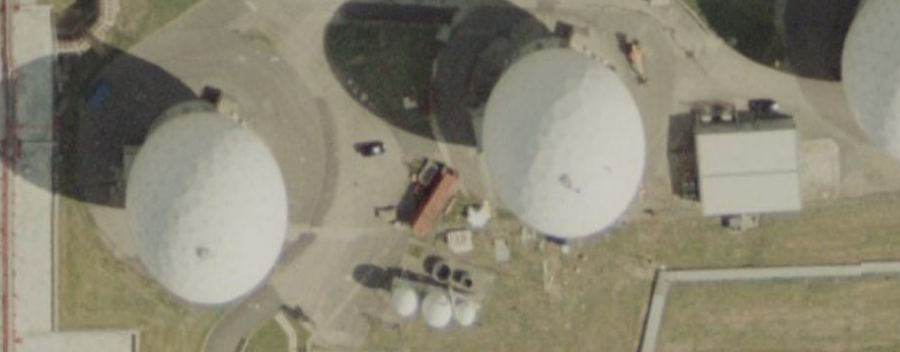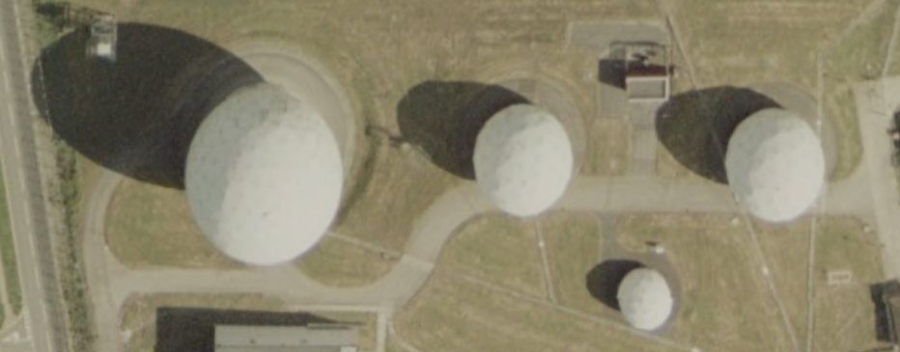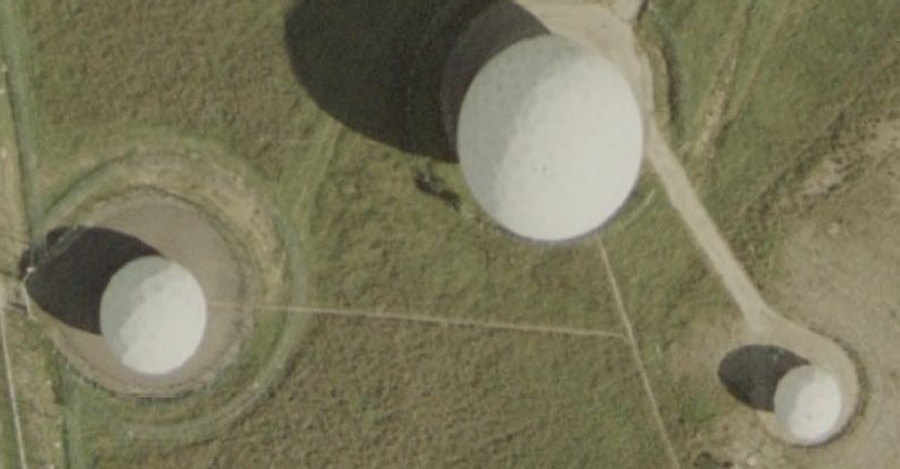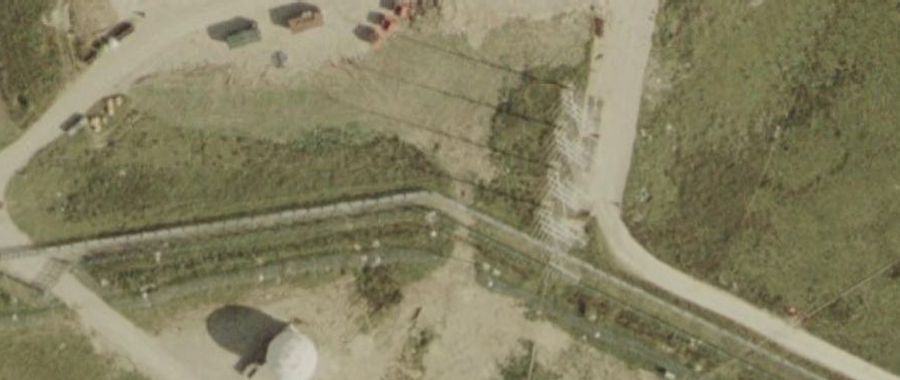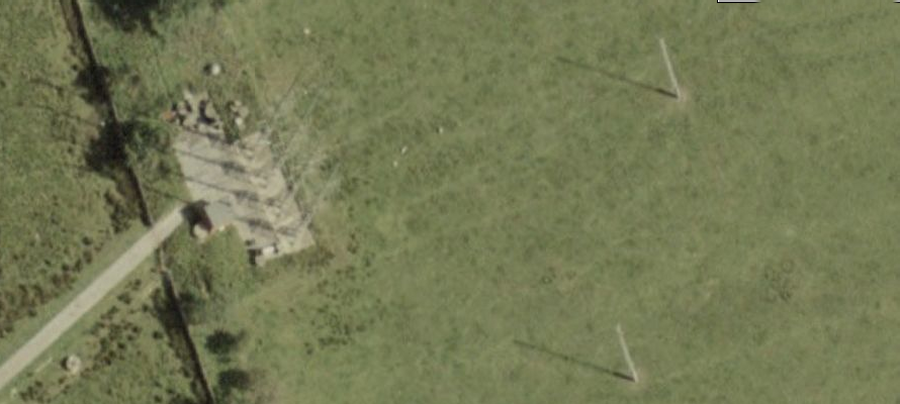|
Menwith Hill, England |
|||||||
|
+54° 00' 37.81", -1° 41' 23.50" ..
Rumors have abounded for several years of a massive system designed to intercept virtually all email and fax traffic in the world and subject it to automated analysis, despite laws in many nations (including this one) barring such activity. The laws were circumvented by a mutual pact among five nations. It's illegal for the United States to spy on it's citizens. Likewise the same for Great Britain. But under the terms of the UKUSA agreement, Britain spies on Americans and America spies on British citizens and the two groups trade data. Technically, it may be legal, but the intent to evade the spirit of the laws protecting the citizens of those two nations is clear. The system is called ECHELON, and had been rumored to be in development since 1947, the result of the UKUSA treaty signed by the governments of the United States, the United Kingdom, Canada, Australia and New Zealand. The purpose of the UKUSA agreement was to create a
single vast global intelligence organization sharing common goals and a
common agenda, spying on the world and sharing the data. The uniformity
of operation is such that NSA operatives from Fort Meade could work from
Menwith Hill to intercept local communications without either nation having
to formally approve or disclose the interception.
In the days of the cold war, ECHELON's primary purpose was to keep an eye on the U.S.S.R. In the wake of the fall of the U.S.S.R. ECHELON justifies it's continued multi-billion dollar expense with the claim that it is being used to fight "terrorism", the catch-all phrase used to justify any and all abuses of civil rights. With the exposure of the APEC scandal, however, ECHELON's capabilities have come under renewed scrutiny and criticism by many nations. Although not directly implicated in the bugging of the Asia Pacific Economic Conference in Seattle, the use of so many U.S. Intelligence agencies to bug the conference for the purpose of providing commercial secrets to DNC donors raised the very real possability that ECHELON's all-hearing ears were prying corporate secrets loose for the advantage of the favored few. Given that real terrorists and drug runners would always
use illegal cryptographic methods anyway, the USA led attempt to ban strong
crypto to the general populace seemed geared towards keeping corporate
secrets readable to ECHELON, rather than any real attempt at crime prevention.
Even close allies do not like it when they are being
spied on. Especially if the objective is not law enforcement but corporate
shenanigans to make rich politicians just that much richer. So, the Civil
Liberties Committee of the European Parliament looked into ECHELON, and
officially confirmed it's existence and purpose.
Here is the article that ran in the London Telegraph.
SOURCE: whatreallyhappened.com |
|||||||
|
|||||||
| EXPOSING THE GLOBAL SURVEILLANCE
SYSTEM
by Nicky Hager from his book SECRET POWER IN THE LATE 1980S, IN A DECISION IT PROBABLY REGRETS,
THE US PROMPTED
HAGER'S INVESTIGATION INTO IT AND HIS DISCOVERY OF
THE ECHELON
For 40 years, New Zealand's largest intelligence agency, the Government Communications Security Bureau (GCSB) the nation's equivalent of the US National Security Agency (NSA) had been helping its Western allies to spy on countries throughout the Pacific region, without the knowledge of the New Zealand public or many of its highest elected officials. What the NSA did not know is that by the late 1980s, various intelligence staff had decided these activities had been too secret for too long, and were providing me with interviews and documents exposing New Zealand's intelligence activities. Eventually, more than 50 people who work or have worked in intelligence and related fields agreed to be interviewed. The activities they described made it possible to document, from the South Pacific, some alliance-wide systems and projects which have been kept secret elsewhere. Of these, by far the most important is ECHELON. Designed and coordinated by NSA, the ECHELON system
is used to intercept ordinary e-mail, fax, telex, and telephone communications
carried over the world's telecommunications networks. Unlike many of the
electronic spy systems developed during the Cold War, ECHELON is
It is, of course, not a new idea that intelligence
organizations tap into e-mail and other public telecommunications networks.
What was new in the material leaked by the New Zealand intelligence staff
was precise information on where the spying is done, how the system works,
intercept-most of the world's e-mail,fax, and telex communications. The ECHELON system is not designed to eavesdrop on a particular individual's e-mail or fax link. Rather, the system works by indiscriminately intercepting very large quantities of communications and using computers to identify and extract messages of interest from the mass of unwanted ones. A chain of secret interception facilities has been established around the world to tap into all the major components of the international telecommunications networks. Some monitor communications satellites, others land-based communications networks, and others radio communications. ECHELON links together all these facilities, providing the US and its allies with the ability to intercept a large proportion of the communications on the planet. The computers at each station in the ECHELON network automatically search through the millions of messages intercepted for ones containing pre-programmed keywords. Keywords include all the names, localities, subjects, and so on that might be mentioned. Every word of every message intercepted at each station gets automatically searched whether or not a specific telephone number or e-mail address is on the list. The thousands of simultaneous messages are read in "real time" as they pour into the station, hour after hour, day after day, as the computer finds intelligence needles in telecommunications haystacks. "Every word of every message intercepted at each station gets automatically searched- whether or not a specific telephone number or e-mail address is on the list." SOMEONE IS LISTENING The computers in stations around the globe are known, within the network, as the ECHELON Dictionaries. Computers that can automatically search through traffic for keywords have existed since at least the 1970s, but the ECHELON system was designed by NSA to interconnect all these computers and allow the stations to function as components of an integrated whole. The NSA and GCSB are bound together under the five-nation UKUSA signals intelligence agreement. The other three partners all with equally obscure names are the Government Communications Headquarters (GCHQ) in Britain, the Communications Security Establishment (CSE) in Canada, and the Defense Signals Directorate (DSD) in Australia. The alliance, which grew from cooperative efforts during World War II to intercept radio transmissions, was formalized into the UKUSA agreement in 1948 and aimed primarily against the USSR. The five UKUSA agencies are today the largest intelligence organizations in their respective countries. With much of the world's business occurring by fax, e-mail, and phone, spying on these communications receives the bulk of intelligence resources. For decades before the introduction of the ECHELON system, the UKUSA allies did intelligence collection operations for each other, but each agency usually processed and analyzed the intercept from its own stations. Under ECHELON, a particular station's Dictionary computer contains not only its parent agency's chosen keywords, but also has lists entered in for other agencies. In New Zealand's satellite interception station at Waihopai (in the South Island), for example, the computer has separate search lists for the NSA, GCHQ, DSD, and CSE in addition to its own. Whenever the Dictionary encounters a message containing one of the agencies' keywords, it automatically picks it and sends it directly to the headquarters of the agency concerned. No one in New Zealand screens, or even sees, the intelligence collected by the New Zealand station for the foreign agencies. Thus, the stations of the junior UKUSA allies function for the NSA no differently than if they were overtly NSA-run bases located on their soil. The first component of the ECHELON network are stations specifically targeted on the international telecommunications satellites (Intelsats) used by the telephone companies of most countries. A ring of Intelsats is positioned around the world, stationary above the equator, each serving as a relay station for tens of thousands of simultaneous phone calls, fax, and e-mail. Five UKUSA stations have been established to intercept the communications carried by the Intelsats. The British GCHQ station is located at the top of high
cliffs above the sea at Morwenstow in Cornwall. Satellite dishes beside
sprawling operations buildings point toward Intelsats above the Atlantic,
Europe, and, inclined almost to the horizon, the Indian Ocean. An NSA station
The job of intercepting Pacific Intelsat communications that cannot be intercepted at Yakima went to New Zealand and Australia. Their South Pacific location helps to ensure global interception. New Zealand provides the station at Waihopai and Australia supplies the Geraldton station in West Australia (which targets both Pacific and Indian Ocean Intelsats). *2 Each of the five stations' Dictionary computers has a codename to distinguish it from others in the network. The Yakima station, for instance, located in desert country between the Saddle Mountains and Rattlesnake Hills, has the COWBOY Dictionary, while the Waihopai station has the FLINTLOCK Dictionary. These codenames are recorded at the beginning of every intercepted message, before it is transmitted around the ECHELON network, allowing analysts to recognize at which station the interception occurred. New Zealand intelligence staff has been closely involved with the NSA's Yakima station since 1981, when NSA pushed the GCSB to contribute to a project targeting Japanese embassy communications. Since then, all five UKUSA agencies have been responsible for monitoring diplomatic cables from all Japanese posts within the same segments of the globe they are assigned for general UKUSA monitoring.3 Until New Zealand's integration into ECHELON with the opening of the Waihopai station in 1989, its share of the Japanese communications was intercepted at Yakima and sent unprocessed to the GCSB headquarters in Wellington for decryption, translation, and writing into UKUSA-format intelligence reports (the NSA provides the codebreaking programs). "COMMUNICATION" THROUGH SATELLITES The next component of the ECHELON system intercepts a range of satellite communications not carried by Intelsat.In addition to the UKUSA stations targeting Intelsat satellites, there are another five or more stations homing in on Russian and other regional communications satellites. These stations are Menwith Hill in northern England; Shoal Bay, outside Darwin in northern Australia (which targets Indonesian satellites); Leitrim, just south of Ottawa in Canada (which appears to intercept Latin American satellites); Bad Aibling in Germany; and Misawa in northern Japan. A group of facilities that tap directly into land-based
telecommunications systems is the final element of the ECHELON system.
Besides satellite and radio, the other main method of transmitting large
quantities of public, business, and government communications is a combination
of water cables under the oceans and microwave networks over land. Heavy
cables, laid across seabeds between countries, account for much of the
world's international communications. After they come out of the water
and join land-based microwave networks they are very vulnerable to interception.
The microwave networks are made up of chains of microwave towers relaying
messages from hilltop to hilltop (always in line of sight) across the countryside.
These networks shunt large quantities of communications across a country.
Interception of them gives access to international undersea communications
(once they surface) and to international communication trunk lines across
continents. They are also an obvious target for large-scale
Because the facilities required to intercept radio
and satellite communications use large aerials and dishes that are difficult
to hide for too long, that network is reasonably well documented. But all
that is required to intercept land-based communication networks is a building
situated along the microwave route or a hidden cable running underground
from the legitimate network into some anonymous building, possibly far
removed. Although it sounds technically very difficult, microwave interception
from space by United States spy satellites also occurs. *4 The worldwide
network of facilities to intercept these communications is largely undocumented,
and because New Zealand's GCSB does not participate in this type of interception,
my inside sources
NO ONE IS SAFE FROM A MICROWAVE A 1994 expos of the Canadian UKUSA agency, Spyworld,
co-authored by one of its former staff, Mike Frost, gave the first insights
into how a lot of foreign microwaveinterception is done (see p. 18). It
described UKUSA "embassy
Since most countries' microwave networks converge on the capital city, embassy buildings can be an ideal site. Protected by diplomatic privilege, they allow interception in the heart of the target country. *6 The Canadian embassy collection was requested by the NSA to fill gaps in the American and British embassy collection operations, which were still occurring in many capitals around the world when Frost left the CSE in 1990. Separate sources in Australia have revealed that the DSD also engages in embassy collection. *7 On the territory of UKUSAnations, the interception of land-based telecommunications appears to be done at special secret intelligence facilities. The US, UK, and Canada are geographically well placed to intercept the large amounts of the world's communications that cross their territories. The only public reference to the Dictionary system
anywhere in the world was in relation to one of these facilities, run by
the GCHQ in central London. In 1991, a former British GCHQ official spoke
anonymously to Granada Television's World in Action about the agency's
abuses of power. He told the program about an anonymous red brick building
at 8 Palmer Street where GCHQ secretly intercepts every telex which passes
into, out of, or through London, feeding them into powerful computers with
a program known as "Dictionary." The operation,
Similarly, British researcher Duncan Campbell has described how the US Menwith Hill station in Britain taps directly into the British Telecom microwave network, which has actually been designed with several major microwave links converging on an isolated tower connected underground into the station. *9 The NSA Menwith Hill station, with 22 satellite terminals and more than 4.9 acres of buildings, is undoubtedly the largest and most powerful in the UKUSA network. Located in northern England, several thousand kilometers from the Persian Gulf, it was awarded the NSA's "Station of the Year" prize for 1991 after its role in the Gulf War. Menwith Hill assists in the interception of microwave communications in another way as well, by serving as a ground station for US electronic spy satellites. These intercept microwave trunk lines and short range communications such as military radios and walkie talkies. Other ground stations where the satellites' information is fed into the global network are Pine Gap, run by the CIA near Alice Springs in central Australia and the Bad Aibling station in Germany. *10 Among them, the various stations and operations making up the ECHELON network tap into all the main components of the world's telecommunications networks. All of them, including a separate network of stations that intercepts long distance radio communications, have their own Dictionary computers connected into ECHELON. In the early 1990s, opponents of the Menwith Hill station
obtained large quantities of internal documents from the facility. Among
the papers was a reference to an NSA computer system called Platform. The
integration of all the UKUSA station computers into ECHELON probably
LOOKING IN THE DICTIONARY The Dictionary computers are connected via highly encrypted
UKUSA communications that link back to computer data bases in the five
agency headquarters. This is where all the intercepted messages selected
by the Dictionaries end up. Each morning
They select their subject category, get a "search result"
showing how many messages have been caught in the ECHELON net on that subject,
and then the day's work begins. Analysts scroll through screen after screen
of intercepted faxes, e-mail messages, etc. and, whenever a message appears
worth reporting on, they select it from the rest to work on. If it is not
in English, it is translated and then written into the standard format
of intelligence reports produced anywhere
"We feel we can no longer remain
silent regarding that which we regard to be gross malpractice and negligence
within the establishment in which we operate."
INFORMATION CONTROL A highly organized system has been developed to control what is being searched for by each station and who can have access to it. This is at the heart of ECHELON operations and works as follows. The individual station's Dictionary computers do not simply have a long list of keywords to search for. And they do not send all the information into some huge database that participating agencies can dip into as they wish. It is much more controlled. The search lists are organized into the same categories, referred to by the four digit numbers. Each agency decides its own categories according to its responsibilities for producing intelligence for the network. For GCSB, this means South Pacific governments, Japanese diplomatic, Russian Antarctic activities, and so on. The agency then works out about 10 to 50 keywords for selection in each category. The keywords include such things as names of people, ships, organizations, country names, and subject names. They also include the known telex and fax numbers and Internet addresses of any individuals, businesses, organizations, and government offices that are targets. These are generally written as part of the message text and so are easily recognized by the Dictionary computers. The agencies also specify combinations of keywords
to help sift out communications of interest. For example, they might search
for diplomatic cables containing both the words "Santiago" and "aid," or
cables containing the word "Santiago" but not "consul" (to avoid the masses
of routine consular communications). It is these sets of words and numbers
(and combinations), under a particular category, that get placed in the
Dictionary computers. (Staff in the five agencies called Dictionary Managers
enter and update the keyword search lists for each
The whole system, devised by the NSA, has been adopted
completely by the other agencies. The Dictionary computers search through
all the incoming messages and, whenever they encounter one with any of
the agencies' keywords, they select it. At the same time, the computer
automatically notes technical details such as the time and place of interception
on the piece of intercept so that analysts reading it, in whichever agency
it is going to, know where it came from, and what it is. Finally, the computer
writes the four-digit code (for the category
This system is very effective for controlling which agencies can get what from the global network because each agency only gets the intelligence out of the ECHELON system from its own numbers. It does not have any access to the raw intelligence coming out of the system to the other agencies. For example, although most of the GCSB's intelligence production is primarily to serve the UKUSA alliance, New Zealand does not have access to the whole ECHELON network. The access it does have is strictly controlled. A New Zealand intelligence officer explained: "The agencies can all apply for numbers on each other's Dictionaries. The hardest to deal with are the Americans. ... [There are] more hoops to jump through, unless it is in their interest, in which case they'll do it for you." There is only one agency which, by virtue of its size and role within the alliance, will have access to the full potential of the ECHELON system the agency that set it up. What is the system used for? Anyone listening to official "discussion" of intelligence could be forgiven for thinking that, since the end of the Cold War, the key targets of the massive UKUSA intelligence machine are terrorism, weapons proliferation, and economic intelligence. The idea that economic intelligence has become very important, in particular, has been carefully cultivated by intelligence agencies intent on preserving their post-Cold War budgets. It has become an article of faith in much discussion of intelligence. However, I have found no evidence that these are now the primary concerns of organizations such as NSA. QUICKER INTELLIGENCE, SAME MISSION A different story emerges after examining very detailed
information I have been given about the intelligence New Zealand collects
for the UKUSA allies and detailed descriptions of what is in the yards-deep
intelligence reports New
With capabilities so secret and so powerful, almost anything goes. For example, in June 1992, a group of current "highly placed intelligence operatives" from the British GCHQ spoke to the London Observer: "We feel we can no longer remain silent regarding that which we regard to be gross malpractice and negligence within the establishment in which we operate." They gave as examples GCHQ interception of three charitable organizations, including Amnesty International and Christian Aid. As the Observer reported: "At any time GCHQ is able to home in on their communications for a routine target request," the GCHQ source said. In the case of phone taps the procedure is known as Mantis. With telexes it is called Mayfly. By keying in a code relating to Third World aid, the source was able to demonstrate telex "fixes" on the three organizations. "It is then possible to key in a trigger word which enables us to home in on the telex communications whenever that word appears," he said. "And we can read a pre-determined number of characters either side of the keyword."12 Without actually naming it, this was a fairly precise description of how the ECHELON Dictionary system works. Again, what was not revealed in the publicity was that this is a UKUSA-wide system. The design of ECHELON means that the interception of these organizations could have occurred anywhere in the network, at any station where the GCHQ had requested that the four-digit code covering Third World aid be placed. Note that these GCHQ officers mentioned that the system
was being used for telephone calls. In New Zealand, ECHELON is used only
to intercept written communications: fax, e-mail, and telex. The reason,
according to intelligence staff, is that the agency does not have the staff
to
Mike Frost's expos of Canadian "embassy collection"
operations described the NSA computers they used, called Oratory, that
can "listen" to telephone calls and recognize when keywords are spoken.
Just as we can recognize words spoken in all the different tones and accents
we encounter, so too, according to Frost, can these computers. Telephone
calls containing keywords are automatically extracted from the masses of
other calls and recorded digitally on magnetic tapes for analysts back
at agency headquarters. However, high volume voice recognition computers
will be technically difficult to perfect, and my New Zealand-based sources
could not confirm that this capability exists. But, if or when it is perfected,
the implications would be
The easiest pickings for the ECHELON system are the
individuals, organizations, and governments that do not use encryption.
In New Zealand's area, for example, it has proved especially useful against
already vulnerable South Pacific nations which do not use any coding,
One final comment. All the newspapers, commentators, and "well placed sources" told the public that New Zealand was cut off from US intelligence in the mid-1980s. That was entirely untrue. The intelligence supply to New Zealand did not stop, and instead, the decade since has been a period of increased integration of New Zealand into the US system. Virtually everything the equipment, manuals, ways of operating, jargon, codes, and so on, used in the GCSB continues to be imported entirely from the larger allies (in practice, usually the NSA). As with the Australian and Canadian agencies, most of the priorities continue to come from the US, too. The main thing that protects these agencies from change is their secrecy. On the day my book arrived in the book shops, without prior publicity, there was an all-day meeting of the intelligence bureaucrats in the prime minister's department trying to decide if they could prevent it from being distributed. They eventually concluded, sensibly, that the political costs were too high. It is understandable that they were so agitated. Throughout my research, I have faced official denials or governments refusing to comment on publicity about intelligence activities. Given the pervasive atmosphere of secrecy and stonewalling, it is always hard for the public to judge what is fact, what is speculation, and what is paranoia. Thus, in uncovering New Zealand's role in the NSA-led alliance, my aim was to provide so much detail about the operations the technical systems, the daily work of individual staff members, and even the rooms in which they work inside intelligence facilities that readers could feel confident that they were getting close to the truth. I hope the information leaked by intelligence staff in New Zealand about UKUSA and its systems such as ECHELON will help lead to change. SOURCE: CAQ Covert Action Quarterly |
|||||||
|
ECHELON Station +54° 00' 37.81", -1° 41' 23.50" ..
..
|
|||||||
| News Articles on ECHELON
EU releases Echelon spying report It exists and the UK has a lot
of explaining to do
The report by the European Union into the Echelon spying network, released yesterday, has concluded that not only does the network exist but that it can prove its existence. It also calls on the UK to pull out of the system - jointly run by the US, Canada, New Zealand and Australia - to prove its commitment to the EU. The huge 142-page report (with another 54 pages in annexes) is available here, but make sure you put enough paper in the printer first. SOURCE: http://www.theregister.co.uk/2001/09/06/eu_releases_echelon_spying_report/(Archived) This is how we know Echelon exists
The European Parliament published its report into the Echelon spying system last week in which it concluded it did exist, was against the law and that the UK had a lot of explaining to do. We've sifted through about 100 of the 194 pages and decided that since no one had yet to officially admit its existence, you may be interested in how the European Parliament decided it was definitely out there. The report admits from the outset that the existence of Echelon can only be proved by gathering together as many clues as possible so that it remains the only possible explanation. Since we are talking about an extremely secretive spying mechanism run by some of the most secretive (and powerful) organisations in the world, this is the only method at our disposal. The report used three basic routes to gathering the clues together. One, physical evidence - all the listening stations dotted about the globe. Two, unclassified documents and other bits of information from the military, NSA and other bodies that run the system. And lastly, the testimony of investigative journalists who have concentrated on Echelon - including Duncan Campbell and Nicky Hager - and former employees of the security services. SOURCE: http://www.theregister.co.uk/2001/09/14/this_is_how_we_know/(Archived) CIA patching ECHELON shortcomings
A core objection to paranoid rants regarding the US National Security Agency (NSA) electronic eavesdropping apparatus called ECHELON is the simple observation that spooks trying to use it are literally buried in an avalanche of white noise from which it's quite difficult to extract anything pertinent. But now the US Central Intelligence Agency (CIA), no doubt with some assistance and guidance from NSA, is making strides towards cracking that little inconvenience. The CIA's Office of Advanced Information Technology is developing a number of data-mining enhancements to make life easy for those who would eavesdrop on electronic communications, Reuters reports. SOURCE: http://www.theregister.co.uk/2001/03/06/cia_patching_echelon_shortcomings/(Archived) |
|||||||
| News
Reports
New
Echelon Disclosures (WorldNetDaily, Mar. 27, 2000)
U.S.
spying pays off for business (MSNBC, April 14, 2000)
Monitor
This, Echelon (Wired News, Oct. 22, 1999)
Spying
on the Spies (Wired News, May. 10, 1999)
Eavesdropping
on Europe (Wired News, Sep. 30, 1998)
Ex-head
of CIA says spying on Europe justified (Scottsman.com, Mar.
29, 2000)
|
|||||||
| Related
Sites
Echelon.com - "You have critical data hidden in your facility; distributed throughout the city, country or the world; and no way to use it to improve your business; the solution you need is here; extend your view. ECHELON:
America's Secret Global Surveillance Network
Echelon
Online Surveillance
Cyber-rights.org Echelon Watch Echelon
Watch - a project of the ACLU (of all things!)
Project Echelon - chronological listing of news articles |
|||||||
| FAIR USE NOTICE: This page contains copyrighted material the use of which has not been specifically authorized by the copyright owner. Pegasus Research Consortium distributes this material without profit to those who have expressed a prior interest in receiving the included information for research and educational purposes. We believe this constitutes a fair use of any such copyrighted material as provided for in 17 U.S.C § 107. If you wish to use copyrighted material from this site for purposes of your own that go beyond fair use, you must obtain permission from the copyright owner. | |||||||
|
|

